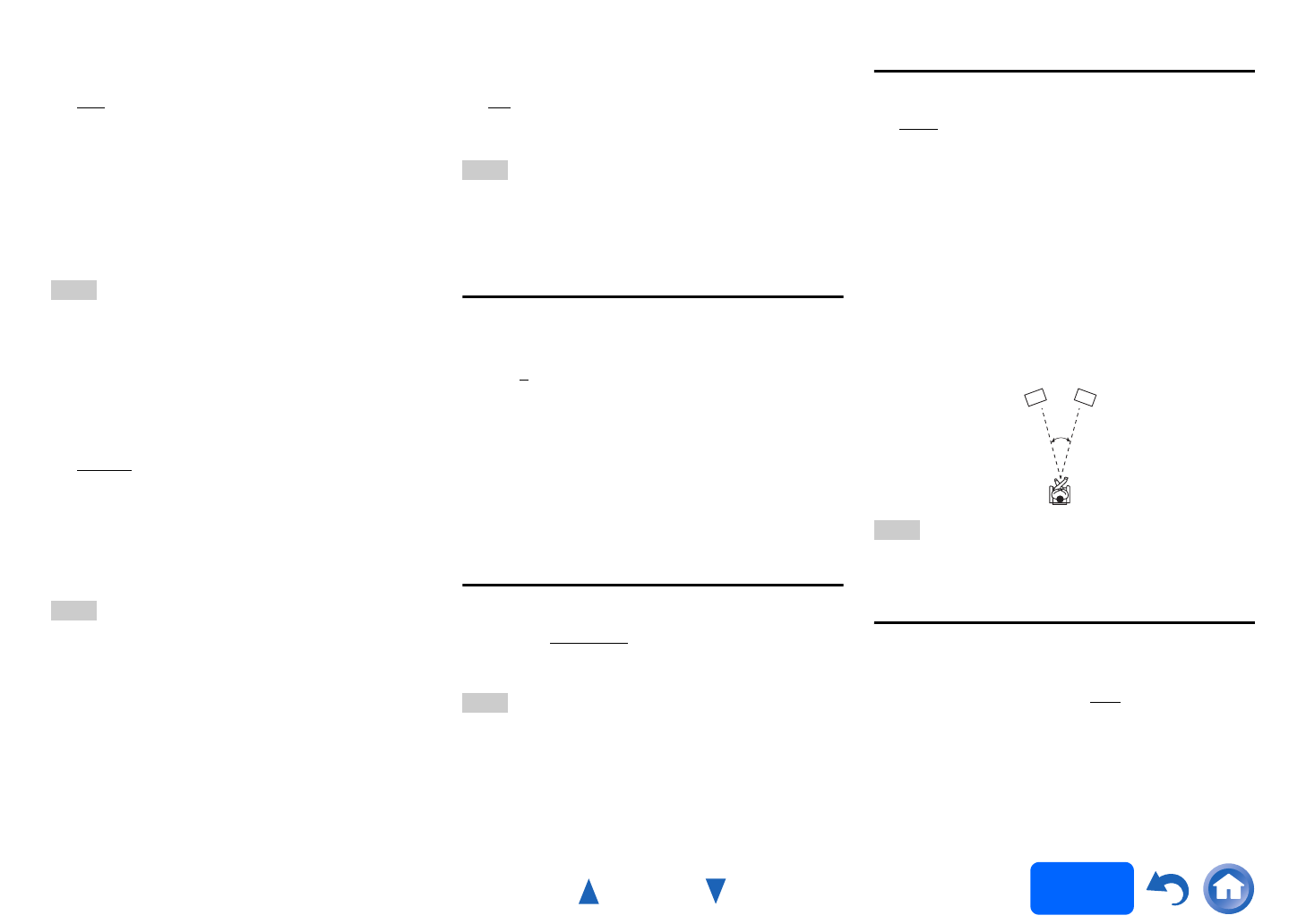
Advanced Operations
En-70
Operating
procedure
(➔ page 61)
■ PL IIz Height Gain
`Low
`Mid
`High
The Height Gain Control in Dolby Pro Logic IIz
enables the listener to select how much gain is
applied to the front high speakers. There are three
settings, “Low”, “Mid” and “High”, and the front high
speakers are accentuated in that order. While “Mid” is
the default listening setting, the listener may adjust
the Height Gain Control to their personal preference.
Note
• If the “Front High” settings is set to “None” (➔ page 65),
this setting cannot be selected.
■ Dolby EX
`Auto:
If the source signal contains a Dolby EX flag, the
Dolby EX or THX Surround EX listening mode is
used.
`Manual
:
You can select any available listening mode.
This setting determines how Dolby EX encoded
signals are handled. This setting is unavailable if no
surround back speakers are connected. This setting
is effective with Dolby Digital, Dolby Digital Plus and
Dolby TrueHD only.
Note
• If the “Surround Back” setting is set to “None”
(➔ page 65), this setting cannot be selected.
• When the “Powered Zone 3” setting is set to “Yes”
(➔ page 65) while Powered Zone 2 is enabled
(➔ page 84), this setting cannot be selected.
• When the “Speakers Type(Front)” setting is set to
“Bi-Amp” or “Digital Crossover” while Powered Zone 2 is
enabled (➔ page 84), this setting cannot be selected.
• If the “Front High” or “Front Wide” setting is enabled
(➔ page 65), this setting is fixed to “Manual”.
■ TrueHD Loudness Management
`Off
`On
This setting specifies whether or not to apply the Late
Night processing on a Dolby TrueHD source.
Note
• When this setting is set to “Off”, the Late Night function for
Dolby TrueHD sources is automatically fixed to “Off”.
• When this setting is set to “Off”, the Dialogue Normalization
information is not available for Dolby TrueHD sources.
DTS
■ Neo:X Music
Center Image
`0 to 2
to 5
The DTS Neo:X Music listening mode creates
11-channel surround sound from 2-channel stereo
sources. With this setting, you can specify by how
much the front left and right channel output is
attenuated in order to create the center channel.
Changing the value from “0” to “5” will spread the
sound of the center channel to left and right
(outwards).
Audyssey DSX
®
■ Soundstage
`–3dB to Reference
to +3dB
With this setting, you can adjust the sound stage when
using Audyssey DSX.
Note
• This listening mode can be selected only when all the
following conditions are satisfied:
–The center speaker is connected.
–Either the front high or front wide speakers are connected.
Theater-Dimensional
■ Listening Angle
`Wide
:
Select if the listening angle is greater than 30
degrees.
`Narrow:
Select if the listening angle is less than 30
degrees.
With this setting, you can optimize the Theater-
Dimensional listening mode by specifying the angle of
the front left and right speakers relative to the
listening position. Ideally, the front left and right
speakers should be equidistant from the listening
position and at an angle close to one of the two
available settings.
Note
• For best results, we recommend setting “
Narrow” to 20°
and “Wide” to 40°.
LFE Level
■ Dolby Digital
*1
, DTS
*2
, Multich PCM, Dolby
TrueHD, DTS-HD Master Audio, DSD
*3
`– dB, –20dB, –10dB, or 0dB
With these settings, you can set the level of the LFE
(Low Frequency Effects) channel individually for each
input sources.
If you find that low-frequency effects are too loud
when using one of these sources, change the setting
to –20 dB or – dB.
*1
Dolby Digital and Dolby Digital Plus sources
Front left speaker Front right speaker
Listening angle: 30°


















